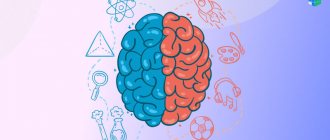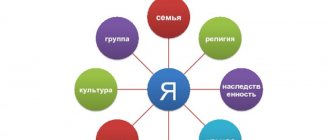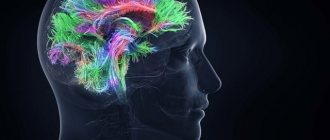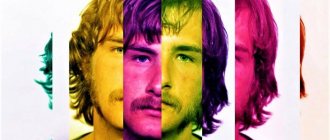Epilepsy is a chronic brain disease that manifests itself as uncontrollable seizures. They arise as a result of a pathologically enhanced impulse in the cerebral cortex. The disease is characterized by a wave-like course - after an attack there comes a period of remission. Clinical manifestations of the disease depend on the location of the lesion, the severity and type of seizures.
Causes
One of the main causes of epilepsy is considered to be a hereditary predisposition: if parents have a history of seizure symptoms, then the child is more likely to develop them. Epilepsy also develops under the influence of the following reasons:
- Traumatic brain injury;
- Cerebrovascular accidents;
- Cerebral vascular dysplasia;
- Volumetric formations in the cerebral cortex;
- Neurosurgical intervention;
- Infectious diseases of the central nervous system;
- Previous ischemic or hemorrhagic stroke.
The occurrence of epileptic attacks is caused by the presence in the cerebral cortex of a stable focus with epileptic activity. Convulsive activity from the primary focus can spread through commissural fibers, cortical neuronal complexes, and the centrencephalic system of the brain. In the presence of increased convulsive activity over a long period of time, secondary lesions arise.
Epilepsy can develop under the influence of the following provoking factors:
- Hormonal imbalances;
- Alcoholism and drug addiction;
- Chronic stress;
- Excessive emotional stress;
- Chronic fatigue.
Secondary attacks of epilepsy occur in patients suffering from brain tumors, cerebral vascular pathology, after hemorrhage in the head, due to poisoning with toxic substances.
Consequences of epilepsy
Epilepsy is a chronic disease that remains with the patient throughout his life.
The risk of premature death associated with injuries from falls, drowning, thermal injuries, and status epilepticus (a long series of attacks with breathing problems) increases. In addition to the clinical symptoms, a person faces the social and psychological consequences of epilepsy. It is a highly stigmatizing disease that reduces the quality and length of life. In some countries, epilepsy is grounds for dismissal or divorce. The vital activity of patients is reduced for fear of being injured during an attack. Epilepsy prevents you from occupying certain positions and driving vehicles.
Precursors of epileptic seizures
The first harbinger of epileptic seizures is an aura. It is individual for each patient. Thanks to the constant warning signs, patients can warn others about the onset of an attack or independently move to a safe place.
There are the following types of aura that precede the onset of an epileptic attack:
- Hallucinations;
- Sharp contraction of the muscles of the upper or lower extremities;
- Repeating the same movements;
- Burning, crawling or tingling sensation in various parts of the body;
- Sharp deterioration in mood.
The duration of the aura is several seconds. During this time, patients do not lose consciousness.
Manifestations of epileptic seizures
Epilepsy is characterized by uncontrolled spontaneous seizures, the occurrence and intensity of which cannot be predicted in advance. The disease can be suspected after the first attack occurs. If the attack recurs, you should immediately consult a neurologist, since in the absence of proper treatment, the frequency of epileptic seizures only increases over time.
The aura can be manifested by the following sensations:
- certain sounds (ringing or tinnitus, melody, other sounds);
- some odors;
- visual visions;
- a feeling of deja vu;
- headaches;
- increased anxiety, etc.
In reflex epilepsy, the appearance of seizures is provoked by a certain irritant. An epileptic seizure in such cases can begin as a result of exposure to bright light, a flash of light, light music in a nightclub, or a fast video sequence with a frequently changing picture.
In addition, epilepsy may be characterized by the following symptoms:
- convulsions: during an attack, tonic or clonic convulsions appear in the muscles of the upper and lower extremities;
- disorder of consciousness: some simple epileptic seizures are accompanied by the preservation of consciousness, others by turning it off or the patient falling into a coma. In addition, during an epileptic seizure, an epileptic may see hallucinations and mentally move to another place;
- autonomic disorders: during an attack, patients experience changes in pulse, blood pressure, and vascular tone;
- memory impairment: after the end of an epileptic attack, the patient most often cannot remember what happened to him. As the disease progresses and the frequency of attacks increases, epileptics experience impaired speech and thinking, which leads to dementia.
In the early stages of the disease, as a rule, simple epileptic seizures occur, characterized by a short duration and the absence of loss of consciousness. As the disease progresses, the condition worsens and attacks become more frequent with more noticeable consequences.
Diagnostics
Diagnosis of the disease occurs by taking an anamnesis. The specialist listens to complaints, on the basis of which a preliminary diagnosis can be made.
After this, the patient is sent for laboratory and hardware examinations, which makes it possible to differentiate epileptic seizures from other pathologies, allows one to find out the cause, the nature of the changes, determine the form and prescribe treatment.
The diagnosis is made by neurologists and epileptologists who determine the causes of epilepsy in adults using indications obtained from a comprehensive comprehensive examination.
Instrumental diagnostic methods
The safest hardware diagnostics is an EEG. It has no contraindications; it can be used to detect areas of paroxysmal activity. These can be sharp waves, spikes, slow waves. Modern EEG makes it possible to identify the exact localization of the pathological focus.
The most informative neuroimaging method is brain MRI. The study allows us to identify the initial cause of the deviation and determine the location of the lesion in the central nervous system.
Laboratory diagnostic methods
Epilepsy occurs under the influence of various reasons; in order to identify the presence of infection, inflammation, hormonal imbalances, genetic defects, the patient needs to take a general blood test, biochemical, molecular genetic, and check the tumor marker.
First aid for seizures
Proper care for an epileptic seizure reduces the risk of complications and injuries. The person who happens to be next to the patient should catch him and prevent him from falling. You also need to do the following:
- Place a blanket, pillow or cushion of clothing under your head;
- Free your neck and chest from constricting objects and clothing (tie, shirt, scarf);
- Carefully turn the patient's head to the side to minimize the risk of inhalation or passive reflux of vomit or own saliva;
- Open your mouth and put a cloth or handkerchief in it to prevent the patient from biting his tongue;
- Do not forcefully open your mouth;
- If breathing stops for a long time, perform artificial ventilation from the mouth to the nose or mouth.
During an attack, the patient may experience involuntary urination or bowel movements. This manifestation of epilepsy should not cause fear in others. After an attack, patients usually experience drowsiness and severe weakness.
Types of disease
The following types of epilepsy are observed in patients of different age groups.
- Juvenile myoclonic epilepsy. Mostly occurs in teenagers. The attacks occur after waking up and are sometimes not accompanied by convulsions.
- Progressive myoclonic epilepsy. It is difficult to treat and can develop into a more complex and dangerous form of the disease throughout life.
- Symptomatic epilepsy. Older people suffer. The first signs of the disease may appear up to 30 years of age. The causes are head injuries and diseases of the nervous system. Due to the varied manifestations of the disease, it is difficult to diagnose as the symptoms can be misleading and the patient may be misdiagnosed even after a thorough examination.
- Temporal lobe epilepsy. Affects the temporal lobes of the brain. A common symptom is a state of “déjà vu.” This form of epilepsy also causes anxiety disorders, uncontrollable outbursts of anger and other emotional states.
- Frontal epilepsy. Symptoms vary and depend on which parts of the brain are affected. Affects the motor functions of the human body. The manifestations of this disease often do not cause concern. The patient may move his eyes and tongue rapidly, and stagnate. From the outside it may seem that a person is simply experiencing nervous excitement. At the same time, a person cannot organize his thoughts, experiences many emotions at the same time and cannot calm down or concentrate on one thing.
- Parietal epilepsy. It is quite rare. The symptom is visual disturbances or eye sensitivity to flashes of light. The eyes may move uncontrollably or jerk from side to side, and the eyelids may tremble. Severe headaches often occur during or after an attack.
- Absence epilepsy. Symptoms of this disease are characterized by short-term fainting or loss of consciousness. With rare exceptions, absence epilepsy is manifested by a loss of concentration; a person cannot focus, breaks off a sentence mid-sentence and cannot build a logical chain to convey his idea. His movements are unclear, his hands can move uncontrollably, inexplicable sensations arise in his fingers, so the patient wants to stretch his hands.
- Myoclonic epilepsy. Manifests itself with sudden spontaneous movements of the arms and legs. The symptoms of this disease are often ignored and confused with the completely normal hypnogogic myoclonus that everyone experiences when falling asleep.
In addition to the classification of epilepsy, individual forms of epileptic seizures are also distinguished.
What does an EEG look like for epilepsy?
To obtain accurate EEG readings for epilepsy, it is necessary to prepare the patient for the procedure. You need to wash your hair thoroughly to keep your hair clean. Installation fixing agents are not allowed. This will allow you to get closer contact with the scalp. It is not recommended to eat two hours before the procedure, but also not to feel hungry. You should also remove all jewelry before the procedure.
Signs of epilepsy with EEG
EEG in epilepsy helps to identify foci of neuronal activity. EEG indicators determine the form of pathology. They can also be used to track dynamics and determine the dosage of medications. The greatest value of this method is that painful changes can be identified in the intervals between attacks.
The following types of EEG are distinguished:
- routine electroencephalography. Diagnostics, in which the recording and recording of brain biopotentials is carried out to determine epilepsy;
- using additional electrodes;
- during night sleep. EEG indicators are recorded during night sleep;
- long-term EEG in epilepsy. Recording indicators during the day;
- EEG with standard activation procedures. Hyperventilation, photostimulation and the use of other types of stimulation such as reading, watching movies, music;
- video monitoring;
- sleep deprivation procedure.
Quite often, changes in the EEG occur when eye movements, changes in breathing rhythm, vascular pulsation or motor reflexes. Therefore, it is very important to correctly interpret the signs of epilepsy in the EEG.
MRI of the brain for epilepsy
Magnetic resonance therapy for epilepsy shows the affected areas of the brain and is performed in almost all cases of the disease. This is an excellent way to determine the extent to which the disease has spread to healthy cells and the speed of its development.
It is the deep conviction of international antiepileptic organizations that the process of undergoing MRI or CT scanning is mandatory and should be carried out at the request of a doctor.
Many modern clinics with the latest equipment provide the opportunity to diagnose this disease, so the procedure is mandatory. For a successful examination you need:
- Referral for research with a competent formulation of a possible diagnosis and the need for diagnostics. The referral must indicate possible suspicions of pathology and any of its manifestations. Based on previous examinations, including EEG, the neurologist can assume the possible location and nature of the pathological process.
- Modern MRI scanner with optimal power and amplitude. Such devices conduct research even with minimal sections.
- Radiation therapy specialist with in-depth knowledge of neurology, with a good understanding of the specifics of the nervous system. The doctor must know when to use additional data collection methods that are not provided for in the medical protocol.
Whether an MRI shows epilepsy depends largely on physicians and consultants, as well as MR imaging specialists, who are often unable to meaningfully analyze the collected data to establish a treatment modality and confirm a final diagnosis.
Is it possible to detect epilepsy using MRI?
Epilepsy as a disease has been known for more than 7 thousand years, but instrumental diagnostics began only in 1929. Magnetic resonance imaging in this case is a reliable instrumental method for diagnosing such a pathology, therefore complex procedures are practiced all over the world to determine the spread and development of the disease down to the last small detail. Thanks to this, it is possible to establish the causes of the pathology, of which there are many:
- defects and anomalies of the brain of various types;
- sclerotic changes;
- oncology and benign tumors;
- changes as a result of impacts and trauma experienced;
- infectious lesions;
- vascular pathologies;
- degenerative changes;
- metabolic disorders.
In other words, diagnostics using modern equipment allows us to examine the pathology from the inside and determine the sources and factors that provoked its development. This method undoubtedly influences the level of treatment, since the final conclusions regarding the patient’s diagnosis are based on MRI or CT readings.
Who prescribes MRI for epilepsy?
Any disease requires the attention of a specialist, and epilepsy is no exception. Especially considering the fact that the most important human organ is affected. After a detailed history, the therapist refers the patient to an appointment with a neurologist, who records the client for an EEG if his suspicions suggest the possibility of damage to tissue cells. This conclusion is required by the radiologist in order to:
- clarify the areas where epileptic activity was detected;
- if necessary, introduce a number of additional programs during the procedure;
- compare the indicators obtained from EEG and MRI, and determine structural changes in tissues.
The use of tomography has several goals pursued by a neurologist. To clarify suspicions and collected data, only those whose history has identified and described a seizure are sent for MRI, since the program allows for a detailed study of possible structural disorders of the areas that are most active during attacks. In addition, the procedure is recommended for patients with an already confirmed diagnosis who cannot get rid of attacks with the help of medications.
CT or MRI - which is better?
Quite a lot depends on the choice of equipment, so random visits to such diagnostic centers are unacceptable. For more detailed diagnostics, the MRI unit is equipped with programs that were created to obtain additional information about the condition of the affected tissues. The absolute coverage of such tissues by the information field of the tomograph greatly simplifies the process of determining therapy and the level of risks for individual cases.
A CT scan is performed to obtain a detailed cross-sectional picture of the brain. Specialized equipment ensures the safety of the procedure and efficiency, and also guarantees the quality of the results obtained. This is a painless examination option, the only contraindication for which is pregnancy. Both tomography options have their advantages, but the need to use one or another device is determined by the attending physician.
How is an MRI performed for epilepsy?
The main obstacle for many is the fact that during the tomography the patient must remain motionless for up to 50 minutes, which is extremely difficult for people with increased irritability or constant anxiety.
The specialist performing the procedure is in another room behind glass and communicates with the patient via a microphone. There should be no foreign objects in the inspection area that could disrupt the operation of the unit. The patient should listen carefully to the doctor and follow his instructions, while remaining as still as possible. A long, but non-traumatic process extracts all the necessary information about the state of the cells and the extent of the spread of the disease.
MRI with contrast for epilepsy
It is known that epilepsy is a disease that has several factors that provoke characteristic seizures. This greatly expands the range of searches for affected tissue areas, which is why different research methods are used.
The procedure itself consists of administering a substance intravenously; it quickly spreads through the vessels and veins, ultimately reaching the brain. The contrast itself contains an acceptable amount of iodine and other compounds that, when released into the blood and under the influence of rays, display their own color. This is how the easily recognizable mesh of the venous system appears.
Contraindications
There is no need to take any special measures before the diagnosis itself. The patient can continue medication treatment, adhere to the diet and all the doctor’s requirements. Usually the patient leads a full life, without restrictions and precautions.
Despite all the harmlessness, the procedure still has a number of limitations. This is the presence of any metal implants in the body, implants of the inner and middle ear, as well as pacemakers. In addition, it is not recommended to undergo examination for people whose weight exceeds 130 kg. The first months of pregnancy in women are also contraindications.
MRI for epilepsy in children
Unfortunately, one of the causes of the disease is a congenital pathology of fetal development. Patients of neurologists and epileptologists often include children of all ages. MRI for epilepsy in children is performed in order to exclude the most dangerous causes that require surgical intervention:
- tumor;
- consequences of injury;
- congenital developmental anomalies;
- cortical dysplasia;
- manifestations of genetic diseases.
It is worth remembering that this examination requires standing still (in the case of examining children) for about 20–30 minutes, so this often becomes a problem. Children are afraid of noise, the absence of adults nearby and unfamiliar sensations.
Deciphering MRI for epilepsy
MRI images of the brain are interpreted exclusively by a qualified radiologist. Often this is a specialist who personally performed the diagnosis and works closely with the patient’s attending physician. Correctly interpreting and explaining images requires professional medical training and significant practical experience.
Basic information is transmitted electronically to the attending physician. Specialists conduct a thorough examination of the scanograms, after which they report the results. The images are used to prescribe additional diagnostic measures if the disease causes controversial statements. None of the doctors with a narrow specialization in other areas has the right to interpret the results in any order.
Treatment
Neurologists at the Yusupov Hospital provide complex treatment for epilepsy. It is aimed at reducing the frequency of epileptic seizures and stopping medications during remission. According to statistics, in 70% of cases, adequately selected treatment helps to almost completely relieve paroxysmal activity in patients.
To achieve optimal results in treatment, patients are prescribed drugs for epilepsy of the following properties:
- anticonvulsants – help relax muscles, they are prescribed to both adults and children;
- tranquilizers - allow you to remove or reduce the excitability of nerve fibers; the drugs have shown a high degree of effectiveness in the fight against minor attacks;
- sedatives – help relieve nervous tension and prevent the development of severe depressive disorders;
- injections - used for twilight states and affective disorders.
Idiopathic focal epilepsy is benign. It requires symptomatic treatment. In focal forms with seizures that appear in series 2-3 times a month and are accompanied by an increase in mental disorders, neurosurgeons perform surgery.
Prevention of epileptic seizures
There are preventive recommendations that, if followed, can prevent epileptic seizures, especially if you already have a history of them:
- you should protect yourself from getting traumatic brain injuries;
- stop smoking, drinking alcohol and drugs;
- try not to stay in stuffy, unventilated rooms for a long time;
- avoid hypothermia;
- give preference to a healthy lifestyle and sports;
- avoid stressful situations;
- do not overwork;
- observe the work and rest schedule.
Epilepsy is a rather severe and difficult-to-treat pathology. Thanks to the prescription of modern anticonvulsants, doctors at the neurology clinic of the Yusupov Hospital are able to significantly improve the quality of life of their patients and prevent the development of new epileptic seizures in them.
An appointment with a neurologist at the Yusupov Hospital can be made by phone or on the clinic’s website. You can also ask questions regarding the conditions of hospitalization in a hospital and the estimated cost of the services provided.
Surgical treatment of epilepsy
Surgical interventions for such pathologies have been practiced for more than 100 years. Thanks to the developed field of neurosurgery and innovative developments in the field of medicine, their effectiveness is 80%.
People who undergo surgery manage to completely get rid of chronic seizures and return to a full life. Modern technologies make it possible to create a detailed map of the areas of the brain that are responsible for the vital functions of the body - speech, movement, memory and coordination.
Indications for surgical treatment
It is known that this disease is as diverse as the factors that provoke it. Therefore, in each individual case, therapy is selected solely based on the patient’s medical history and test results, CT or MRI diagnostics, as well as EEG.
The possibility of surgical treatment is discussed when a number of conditions are met:
- The disease has a focal (focal) character. The epileptogenic region of the brain is precisely determined, the removal of which will relieve the patient from seizures.
- Weighing the risks. Any surgical activity should not lead to a deterioration in the person’s quality of life due to neurological or neuropsychological deficits.
- The form must be exclusively pharmacoresistant, that is, at least two drugs have no effect on the affected areas.
Since the operation is prescribed in special cases, preparation and preliminary procedures before the intervention also require attention. Through proper diagnosis and examination, a complete picture of the onset and development of the disease in the patient is often restored.
Examination and tests before surgery
The high effectiveness of such radical treatment can only be achieved with strict adherence to all standards of preparatory examinations carried out before the day of surgery. They include:
- MRI according to the epileptic scanning program;
- EEG video recording, which is mandatory for any form of pathology;
- a detailed description or video of attacks that were recorded at home;
- study of the patient’s neuropsychological profile to confirm pre-existing deficits in mental functions;
- analysis of possible risk factors and complications that may arise during and after surgery;
- consultation with an epileptologist.
Surgical manipulations are carried out only in specialized centers and specialized clinics with the mandatory presence of resuscitation equipment.
Intracranial EEG recording
EEG (electroencephalogram) is a diagnostic test that patients with any damage or pathology of the brain must undergo. This method allows us to establish normal electrical activity and identify pathological potential of the brain and disturbances in its structure. EEG is widely used for:
- epilepsy;
- differential diagnosis of epileptic seizures;
- non-epileptic paroxysmal states.
EEG cannot be assessed as the main source of diagnosis. By its specificity, most of the indications are passive. Registration of EEG data in the absence of significant stimuli does not allow us to determine the reactivity of certain normal rhythms and obtain a detailed picture with reliable information about pathological activity.
Types of surgical treatment
Surgical treatment in Russia is based on several techniques that are widely used throughout the world and have excellent success rates in practice. However, it is worth noting that 100% effectiveness is ensured not by the method of surgical intervention, but by other factors that determine the period of the disease, the degree of brain damage, the stage of development and the individual physical and neurological data of the patient. Therefore, it is almost impossible to select the most effective method. Main types of interventions:
- resection of the temporal lobe;
- lesionectomy;
- callosotomy of the corpus callosum;
- functional hemispherectomy;
- vagus nerve stimulation;
- multiple sublial dissections;
- implantation of the RNS neurostimulator.
The choice of a specific type of operation depends entirely on the doctor, who, based on existing data about the patient’s condition and test results, approves the method that is most effective in a particular example.
Ketogenic diet for epilepsy
The ketogenic diet is a diet that aims to produce increased amounts of ketone bodies in the body, which in turn are a treatment for epilepsy, since when they enter the brain, ketone bodies have an anticonvulsant effect.
The ketogenic diet, when strictly followed, has a positive result in 70% of cases. This type of nutrition is especially effective for children, despite the fact that it is most difficult for a child to adhere to this diet.
Ketogenic diet menu for adults
The main principle of the ketogenic diet is the ratio of proteins and carbohydrates relative to fats - the balance should correspond to a value of 1 to 4, while the amount of protein consumed should be several times higher than the amount of carbohydrates. A healthy person receives energy from carbohydrates - due to their oxidation, ATP (adenosine triphosphate) is released, which in turn is fuel for our body.
During the diet, the regimen can be adjusted based on the patient’s personal indicators or wishes. The basis of such a diet should be an abundance of healthy fats, which are recommended to be obtained from the following foods:
- fatty sea fish;
- beef, lamb, pork;
- salo;
- butter and cream;
- vegetable oils - olive, coconut, flaxseed, sea buckthorn and sesame;
- seeds, nuts;
- avocado.
Dangerous products for epilepsy
For people suffering from epilepsy, it is important to avoid overeating and also limit the consumption of simple sugars. A diet for epilepsy is aimed at reducing the load on the human body and preventing the development of seizures. You should limit your use as much as possible:
- refined sugar, honey;
- flour products (bread, rolls, cookies, pasta);
- various cereals;
- vegetables and fruits containing large amounts of starch (mainly root vegetables);
- alcohol;
- various sauces with a high percentage of carbohydrates.
Refusal of harmful products can not only reduce the likelihood of repeated epileptic attacks, but also improve the general condition of the patient. It should be understood that even rare minimal violations of nutritional rules threaten the poor performance of the entire diet. It is important to turn this diet into a lifestyle.
Ketogenic diet menu for adults
As a rule, the ketogenic diet is not prescribed to all patients, but only to those who do not have a positive reaction to the use of antiepileptic drugs. This diet is most effective in childhood. However, despite the high effectiveness of this diet, it has a number of contraindications:
- cerebrovascular pathologies;
- encephalopathy;
- kidney and liver diseases;
- diseases of the endocrine system (or predisposition to them);
- mitochondrial pathologies;
- diseases of the cardiovascular system.
A sample menu on a ketogenic diet looks like this:
- first meal (breakfast) - scrambled eggs with ham or bacon, salad of non-starchy vegetables, dressed with olive oil;
- second meal (lunch) - stewed or fried pork or beef, steamed vegetables;
- third meal (dinner) - fatty sea fish (salmon, mackerel, herring), fresh vegetables and hard cheese.
The duration of this diet is regulated by the doctor. It takes at least 3-4 weeks to get results. If the diet gives a positive result, it is recommended to stick to this diet for the rest of your life.
Ketogenic diet for children
For children, the ketogenic diet is indicated only after one year in order to avoid developmental delays and serious complications of internal biorhythms. For normal development, children must eat all trace elements and vitamins in sufficient quantities.
The ketogenic diet for children will be approximately the same as for adults. However, children are also prescribed special fatty milk drinks, which “accustom” the child’s body to consuming large amounts of fat. The milk drink can be consumed in the form of a shake or ice cream.
Choice of treatment tactics
Based on the collected data, the doctor makes a decision on drug or surgical treatment of a certain type of disease. Let us remember that there is a pathology that cannot be treated with medications, so it is an indication for surgical intervention.
Often, to get a detailed understanding of the nature of the disease, doctors interview the patient’s relatives and ask them to describe the characteristics of the attacks; sometimes they ask them to make a home video in order to familiarize themselves with them. After analyzing all the obtained indicators, the doctor decides to conduct individual therapy using drugs that stop seizures.
Vagus nerve stimulation for epilepsy
Vagus nerve stimulation is a minimally invasive procedure in which a miniature device is placed under the skin. An epilepsy stimulator is placed by clavicle specialists and is used to generate impulses that are then sent to the vagus nerve using special electrodes. Thus, the device can be programmed to generate pulses lasting 30 seconds every 5 minutes. Flexible settings allow you to choose the optimal mode for each patient.
An epilepsy stimulant can cause complications, about which experts warn the patient. Thus, during the operation, neck vessels and nerves may be damaged. In addition, the patient may have an allergic reaction to the anesthesia or bleeding. Experienced specialists first study possible risks and take measures to minimize them.
Indications for the procedure
Impulses in the brain are transmitted from neuron to neuron in an orderly manner. With epilepsy, foci of pathological pulsation occur, and the order of impulses is disrupted. Drug therapy for epilepsy can effectively control seizures.
Vagus nerve stimulation for epilepsy is indicated in the following cases:
- if drug therapy is ineffective;
- Conservative treatment has a positive effect, but side effects occur when using drugs;
- other surgical treatments for epilepsy have failed to control seizures;
- The patient experiences frequent and prolonged depression due to epilepsy.
When treating epilepsy, neurologists at the Yusupov Hospital give preference to the safest methods and minimally invasive procedures. Each therapeutic measure prescribed to a patient with epilepsy is justified and rational.
Benefits of Vagus Nerve Stimulation
Vagus nerve stimulation is a minimally invasive technique used at the Yusupov Hospital. It has several advantages in the treatment of epilepsy:
- after a stimulator is installed under the patient’s skin, epilepsy attacks become rare and their severity decreases;
- the procedure allows you to effectively control attacks;
- stimulation helps to improve the general condition of the patient;
- the technique is minimally invasive. To install the device, only two punctures are required in the collarbone and neck;
- recovery of the body after surgery occurs in the shortest possible time.
When treating epilepsy, neurologists at the Yusupov Hospital prefer medications, but if they are ineffective, stimulation of the vagus nerve can produce a positive result.
In what cases is hospitalization required?
The patient must be taken to the hospital:
- if epilepsy was detected for the first time - to conduct research and select effective treatment;
- with status epilepticus;
- in case of planning surgical intervention (in particular, removal of a brain tumor accompanied by epileptic seizures);
- in order to routinely assess the dynamics of the disease.
Physical therapy exercises, supervised by an experienced physical therapy doctor, can normalize the processes of excitation and inhibition in the brain, which are most often disturbed in epileptics. Special rhythmic movements and breathing exercises have a positive effect on neurons, harmonize the mental state of patients, and prevent stress and other diseases.
Is epilepsy curable?
Before starting treatment, a diagnosis should be determined, because loss of consciousness and various convulsions can occur due to a sharp drop in blood sugar, anemia, poisoning, high fever, cerebrovascular accident, calcium deficiency and other conditions. Antiepileptic drugs cannot be prescribed to such patients immediately. The diagnosis of epilepsy is made only when epileptic seizures recur.
The percentage of patients with epileptic seizures could be significantly lower if patients took medications regularly and did not stop treatment on their own. The decision to discontinue medications can only be made by a doctor, and not earlier than after 5 years of treatment, if during this time the patient has not had epileptic seizures. At the Yusupov Hospital, an epileptologist always monitors how the patient’s illness develops.
The first signs of epilepsy
Often, the patient and his family are not aware of the presence of epilepsy until the first attack. It can be quite difficult to determine the reasons for its development and the specific irritant for the first time, however, the fact that an epilepsy attack is approaching can be suspected if the patient has certain signs:
- headache a few days before an epileptic seizure;
- sleep disorders;
- severe stress;
- nervousness and irritability;
- decreased appetite;
- loss of appetite.
During a convulsive attack, muscle tension and lack of response to any irritants are noted - patients do not hear sounds, do not respond to touch, pain, their pupils do not narrow or dilate. After an epileptic seizure, people become lethargic and drowsy; to restore strength and normalize their condition, they need rest and good sleep.
How to prevent an epilepsy attack
Epilepsy attacks occur differently depending on the form of the disease. The most severe course of the disease is accompanied by attacks with loss of consciousness, convulsions; the patient is often injured and does not remember anything after the attack. Another type of epileptic seizure occurs without loss of consciousness. The patient may freeze for a while, his gaze stops, his limbs begin to spasm, he may smack his lips. If the patient was standing, then a spasm of the limbs may force him to sit down, then he loses control and falls onto his back. In most cases, patients with epilepsy do not remember themselves at such moments.
Lack of sleep for a baby or schoolchild can lead to the development of an attack if the child has epilepsy. There are certain sleep standards that must be observed for a sick child:
- a newborn sleeps during the day from 8 to 9 hours, at night from 10 to 12 hours;
- from 3 months, the child sleeps from 6 to 7 hours during the day, and up to 10 hours at night;
- from six months at least 15 hours a day;
- from 10 months at least 14 hours a day;
- from one and a half years old at least 13 hours a day;
- from three to seven years at least 12 hours a day;
- from 14 to 17 years old at least 9 hours a day.
An adult with epilepsy should sleep at least 8 hours a day to prevent the development of an attack, and older people at least 7 hours.
How to prevent epilepsy in children and adults
To prevent epilepsy in a child, prevention should begin before birth. Do not drink alcohol, do not smoke during pregnancy or breastfeeding, eat rationally, follow all doctor’s recommendations.
In young children, the cause of epilepsy can be intrauterine hypoxia - this disorder is indicated by the results of studies during pregnancy. The pregnant woman will have to undergo treatment and be under the supervision of doctors. An epileptic attack in a child can be caused by a brain infection - this is one of the most common causes of epilepsy.
Types and symptoms
Epilepsy is multifaceted and multifaceted; its symptoms are not limited to seizures. The most common classification is depending on the severity of attacks and their main manifestations.
Aura (harbingers)
Many epileptic seizures begin with an aura. This is the name given to a complex of specific sensations that occurs shortly before a seizure. Manifestations of an aura can be completely different: paresthesia (pathological sensations), a specific taste in the mouth, auditory, visual or olfactory hallucinations, etc. Before the appearance of an aura, a person often begins to experience causeless anxiety and internal tension.
Partial (focal) seizures
These conditions occur when a small area of the brain is involved in pathological overexcitation.
Simple partial seizures are characterized by preserved consciousness and last only 1-2 minutes. Depending on the location of the pathological focus, a person feels:
- sudden change of mood for no apparent reason;
- small twitching in a certain part of the body;
- feeling of déjà vu;
- hallucinations: lights before the eyes, strange sounds, etc.;
- paresthesia: a feeling of tingling or crawling in any part of the body;
- difficulty pronouncing or understanding words;
- nausea;
- change in heart rate, etc.
Complex attacks are characterized by more severe symptoms and often affect consciousness and thinking. Human can:
- lose consciousness for 1-2 minutes;
- there is no point in looking into emptiness;
- scream, cry, laugh for no apparent reason;
- constantly repeat any words or actions (chewing, walking in a circle, etc.).
Typically, during a complex seizure and for some time after it, the patient remains disoriented for some time.
Generalized seizures
Generalized seizures are one of the classic signs of epilepsy that almost everyone has heard of. They occur if the epileptogenic focus has spread to the entire brain. There are several forms of seizures.
- Tonic convulsions. The muscles of most of the body (especially the back and limbs) simultaneously contract (come to tone), remain in this state for 10-20 seconds and then relax. Such attacks often occur during sleep and are not accompanied by loss of consciousness.
- Clonic convulsions. Rarely occur in isolation from other types of attacks. Manifested by rhythmic rapid contraction and relaxation of muscles. The movement cannot be stopped or delayed.
- Tonic-clonic seizures. This type of attack is called grand mal, which means “great illness” in French. The attack is divided into several phases: precursors (aura);
- tonic convulsions (20-60 seconds): the muscles become very tense, the person screams and falls; at this time his breathing stops, his face becomes bluish, and his body arches;
- clonic convulsions (2-5 minutes): the muscles of the body begin to contract rhythmically, the person thrashes on the floor, foam is released from the mouth, often mixed with blood due to a bitten tongue;
- relaxation: convulsions stop, muscles relax, involuntary urination or defecation often occurs; consciousness is absent for 15-30 minutes.
After the end of a generalized seizure, a person remains for 1-2 days feeling overwhelmed, problems with coordination of movements and fine motor skills. They are associated with cerebral hypoxia.
- Atonic attacks. They are characterized by short-term muscle relaxation, accompanied by loss of consciousness and falling. The attack lasts literally 10-15 seconds, but after it ends the patient does not remember anything.
- Myoclonic seizures. They manifest themselves as rapid twitching of the muscles of individual parts of the body, usually the arms or legs. The seizure is not accompanied by loss of consciousness.
- Absence seizures. The second name for attacks is petit mal (minor illness). This symptom of epilepsy occurs more often in children than in adults and is characterized by a short-term loss of consciousness. The patient freezes in place, looks into emptiness, does not perceive speech addressed to him and does not react to it. The condition is often accompanied by involuntary blinking of the eyes, small movements of the hands or jaws. The duration of the attack is 10-20 seconds.
Pediatric epilepsy
Childhood epilepsy has many masks. In newborns, it can be manifested by periodic muscle contractions that do not resemble seizures, frequent tilting of the head back, poor sleep and general restlessness. Older children may suffer from classic seizures and absence seizures. Partial seizures most often occur:
- severe headaches, nausea, vomiting;
- short periods of speech disorder (the child cannot utter a single word);
- nightmares followed by screams and hysterics;
- sleepwalking, etc.
These symptoms are not always a sign of epilepsy, but they should serve as a reason for an urgent visit to the doctor and a full examination.
Forecast
The prognosis for epilepsy if you follow medical recommendations and take medications in a timely manner is favorable. To do this, it is important for a person to maintain a careful attitude towards his health: maintain a daily routine, have adequate sleep, avoid overexertion, and completely give up bad habits such as cigarettes and alcohol.
In most clinics, patients with epilepsy are seen by neurologists or psychotherapists, who sometimes find it difficult to understand the details of diagnosis and the intricacies of treatment of this disease. Just one EEG requires enormous experience and skills of a professional. Therefore, the Yusupov Hospital employs highly specialized epileptologists who can answer all your questions. You can make an appointment with them by calling the Yusupov Hospital.
Bibliography
- Mukhin, K.Yu. Definition and classification of epilepsy. Project classification of epileptic seizures 2021 / K.Yu. Mukhin - Text: immediate // Russian Journal of Child Neurology, 2021. - No. 12. - P. 8-19.
- Rudakova, I.G. Epilepsy. Fundamentals of diagnostics and therapy / I.G. Rudakova, S.V. Kotov, Yu.A. Belova - Text: direct // Almanac of Clinical Medicine, 2004.- P303-315.
- Epilepsy: WHO fact sheet: [Global website]. – Geneva, 2019 – URL: (access date: 09/26/2021). — Text: electronic.
Author:
Pugonina Tatyana Alekseevna, Therapist










